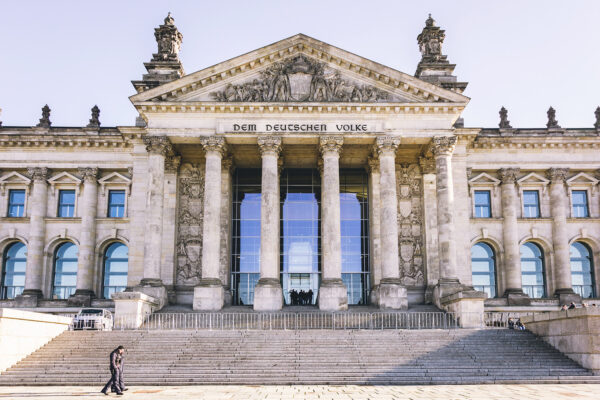
Germans returned at least six parties to parliament on Sunday (counting the “Union” of Christian Democrats as one). The fate of The Left still hangs in the balance. Projections give the former communists exactly the 5 percent support they need to meet the electoral threshold.
The most likely outcome is a three-party government including the liberal Free Democrats (FDP) and Greens. The question is whether the Social Democrats (SPD) or Union will lead it.
If you haven’t been reading our live election blog, this explainer will get you up to speed on the results, takeaways and next steps.
Results
- The Social Democrats have become the largest party for the first time since 2005.
- The Greens posted their best result ever with 118 seats, up 51.
- The FDP nearly matched their previous record from 2009 with 92 seats.
- The Union parties haven’t been this small since 1953.
- The next Bundestag will be the largest in German history with 736 members, up from 709. (Assuming The Left make it.)
Takeaways
- The Christian Democrats made a mistake nominating Armin Laschet instead of Markus Söder, the more outspoken prime minister of Bavaria. After sixteen years of Angela Merkel, voters were ready for a change — and the Union parties gave them the bland, uninspiring Laschet.
- Olaf Scholz isn’t a man who stirs passions either, but the rules are different for Social Democrats: they always need to convince middle-income voters they can be trusted with their money. Scholz, who has been finance minister since 2018, did.
- The Greens, despite posting their best result ever, will be disappointed they didn’t gain more. German voters name climate as one of their top concerns. It looks like left-wing voters flocked to Scholz in order to deny Laschet first place and improve the chances of a left-leaning government.
- But because The Left did so poorly, the best the SPD and Greens can hope for is a “traffic light” coalition (named after the parties’ colors red, green and yellow) with the FDP. The liberals have promised voters to block the deficit and tax increases the center-left parties would need to finance investments in everything from electric cars to schools.
Possible coalitions
The “grand coalition” of Christian Democrats and Social Democrats could stay in power, but that’s the fallback in case other options fail.
Adding the Greens (nicknamed the “Kenya” option after the colors of its flag) or FDP (“Germany”) to such a coalition would throw it out of balance.
A left-wing coalition of SPD, Greens and Left would fall short. All other parties have ruled out pacts with the Alternative for Germany (AfD). That leaves:
- A “traffic light” coalition of SPD, Greens and FDP.
- A “Jamaica” coalition of Union, Greens and FDP.
The first is more likely, given that the SPD won the election. But it’s a bad fit for the FDP, who would face opposition from the center-right Union and far-right AfD.
Similarly, in a “Jamaica” coalition, the Greens would face opposition from the center-left and far left.
Hence FDP leader Christian Lindner’s suggestion that he and the leaders of the Greens should talk first and then decide whether to add the SPD or Union.
What happens next
The new Bundestag must convene within thirty days of the election, which would be October 26. But lawmakers will already meet in their parties during the week to elect their leaders and discuss their strategies.
Parliament’s first order of business will be electing a chairman or -woman. Wolfgang Schäuble, the former finance minister, is expected to stand for reelection. He has been president of the Bundestag since 2017.
Next will be the vote for chancellor, but that could take a while. In 2009, parties did a deal within a month. In 2017, they needed 172 days. (Which was a lot by German standards, but run-of-the-mill to Belgians and Dutch.)
A chancellor-candidate will be formally nominated by Germany’s ceremonial president and must win a majority in a secret ballot. Since the end of World War II, all German chancellors have won a majority on the first ballot.
If that doesn’t happen, the Constitution allows another vote within fourteen days. At that point, a simple plurality would suffice. However, the president can also decide to dissolve parliament and call early elections if no candidate can muster a majority.
Merkel will remain chancellor until her successor is elected, which means she will most likely represent Germany at the G20 summit in Rome in October and possibly the COP26 climate summit in Glasgow in November.
